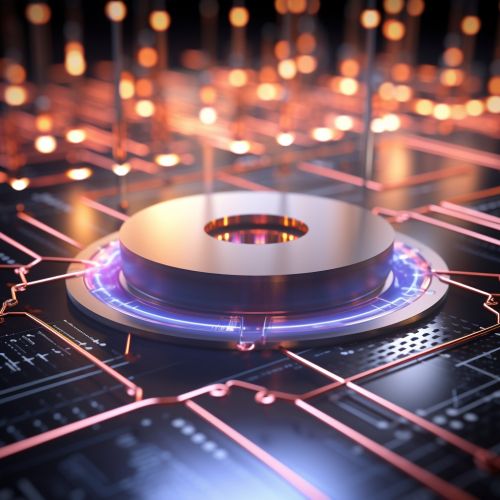Josephson Junctions
Introduction
The Josephson Junction is a key component in superconducting electronics and quantum computing. Named after the British physicist Brian D. Josephson, who predicted its properties in 1962, the junction is a thin barrier of insulating material or normal metal that separates two superconductors. The Josephson effect, which describes the passage of a supercurrent through the junction, has been instrumental in the development of a variety of technologies, from sensitive magnetometers to quantum bits (qubits) in quantum computers.


Theory and Principles
The theoretical foundation of the Josephson Junction is rooted in quantum mechanics and the theory of superconductivity. The Josephson effect can be understood as a manifestation of quantum tunneling, where Cooper pairs (pairs of electrons with opposite momentum and spin) tunnel through the barrier. This effect is described by two fundamental relations known as the Josephson relations.
The first Josephson relation describes the direct current (DC) Josephson effect, which states that the supercurrent through the junction is proportional to the cosine of the phase difference of the superconducting wave functions on either side of the junction. The second Josephson relation describes the alternating current (AC) Josephson effect, which states that a voltage across the junction will cause the phase difference to change at a rate proportional to the voltage.
The Josephson Junction can also exhibit a phenomenon known as macroscopic quantum tunneling, where the entire superconducting current can tunnel through the potential barrier. This effect is crucial in the operation of superconducting qubits.
Applications
Josephson Junctions have found wide-ranging applications in various fields. In superconducting electronics, they are used in devices such as SQUIDs (Superconducting Quantum Interference Devices), which are extremely sensitive magnetometers. SQUIDs operate based on the AC Josephson effect and can detect extremely small changes in magnetic fields.
In the field of quantum computing, Josephson Junctions are used to create superconducting qubits. These qubits, which are the fundamental units of information in a quantum computer, can exist in a superposition of states, allowing for the parallel processing of information. The Josephson Junction allows for the precise control and manipulation of these qubits, making it a critical component in the development of quantum computers.
Josephson Junctions are also used in voltage standards. The AC Josephson effect provides a direct link between frequency and voltage, allowing for the creation of highly accurate voltage standards based on the frequency of microwave radiation.
Challenges and Future Directions
Despite their wide-ranging applications, Josephson Junctions also present several challenges. The supercurrent through the junction is sensitive to temperature and magnetic fields, which can limit the performance of devices based on Josephson Junctions. Furthermore, the fabrication of high-quality Josephson Junctions is a complex process that requires precise control over the materials and dimensions of the junction.
Future research in the field of Josephson Junctions is likely to focus on addressing these challenges and exploring new applications. For instance, there is ongoing research into the use of Josephson Junctions in the creation of topological qubits, which are predicted to have greater resistance to errors than conventional qubits. Moreover, the potential use of Josephson Junctions in neuromorphic computing, which aims to mimic the neural structures and functionality of the human brain, is an exciting area of future research.
